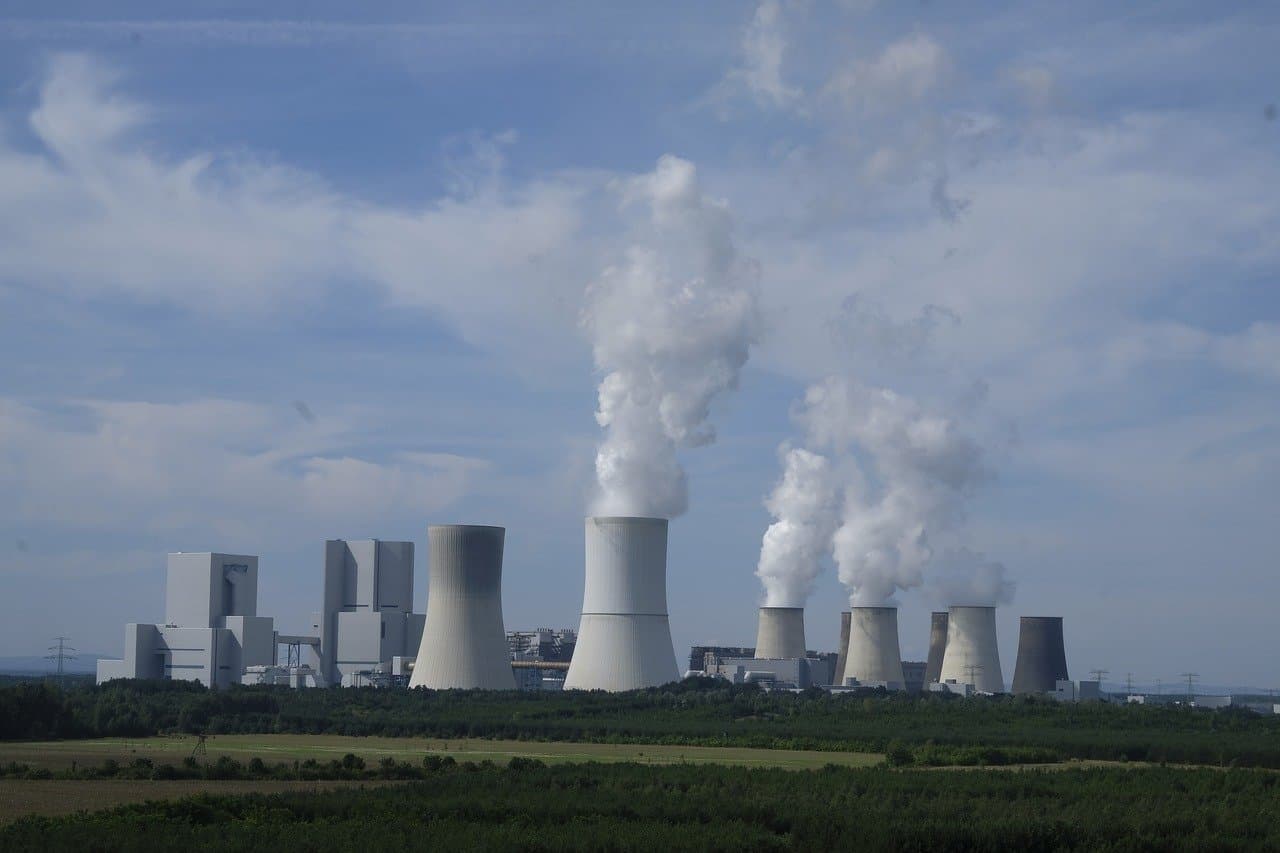Nuclear energy is a form of energy that is released from the nucleus, the central part of atoms made up of protons and neutrons. The source of this energy can come from two physical processes: fission, when atomic nuclei split into several parts, and fusion, when nuclei fuse together.
The nuclear energy used worldwide to generate electricity today is generated by nuclear fission, while fusion-based electricity generation technology is still in the research and development stage. In this article, we will elaborate on nuclear fission. You can learn more about nuclear fusion in this article.
What is nuclear fission?
Nuclear fission is a reaction in which the nucleus of an atom splits into two or more smaller nuclei, releasing energy.
For example, the nucleus of the uranium-235 atom when hit by a neutron splits into a barium nucleus and a krypton nucleus and two or three additional neutrons. These additional neutrons collide with other uranium-235 nuclei in the vicinity, which also split and produce additional neutrons with a multiplier effect, thus forming a chain reaction within a split second.
Each time this reaction is accompanied by the release of energy in the form of heat and radiation. Just as heat from fossil fuels such as coal, gas and oil is used to generate electricity, in a nuclear power plant this thermal energy can be converted into electricity.
How does a nuclear power plant work?
In a nuclear power plant reactor, a nuclear chain reaction, most often using uranium-235 based fuel, is localised and controlled by means of appropriate equipment, which generates heat as a result of fission. This heat is used to heat the reactor coolant, usually water, to produce steam. The steam is then sent to turbines, causing them to spin and activating an electric generator, thus generating electricity without any carbon dioxide emissions.
Uranium mining, enrichment and disposal
Uranium is a metal found in rocks all over the world. Uranium has several natural isotopes, which are forms of the element that differ in mass and physical properties but with the same chemical properties. Uranium has two primary isotopes: uranium-238 and uranium-235. Uranium-238 accounts for most of the world’s uranium but is incapable of fission chain reaction, while uranium-235 can be used to generate fission energy but represents less than 1 percent of the world’s uranium reserves.
In order to increase the fission probability of natural uranium, it is necessary to increase the amount of uranium-235 it contains through a process called uranium enrichment. Once uranium has been enriched, it can be used effectively for three to five years as nuclear fuel in nuclear power plants, after which time it is still radioactive and must be disposed of in accordance with strict regulations to protect people and the environment. The used fuel, called spent fuel, can also be reprocessed into other fuels that can be used as new fuel for dedicated nuclear power plants.
What is the nuclear fuel cycle?
The nuclear fuel cycle is a multi-stage production process required to generate electricity using uranium in nuclear power reactors. This cycle begins with uranium mining and ends with the disposal of radioactive waste.
Nuclear waste
During the operation of a nuclear power plant waste is generated with different levels of radioactivity. Depending on the level of radioactivity and the final destination, different strategies are used to manage it. You can find more information on this topic in the animated clip below.
Radioactive waste management
Radioactive waste is a small fraction of total waste. It is a by-product of the millions of medical procedures carried out each year, industrial and agricultural applications of radiation and the operation of nuclear reactors, which produce around 10 per cent of the world’s electricity. The animated video explains how radioactive waste is managed to ensure that people and the environment are protected from radiation today and in the future.
The next generation of nuclear power plants based on so-called innovative advanced reactors will produce much less nuclear waste than today’s reactors. Construction of such plants is expected to start closer to 2030.
Nuclear power and climate change
Nuclear power is a low-carbon energy source because, unlike power plants fuelled by coal, petroleum products or natural gas, nuclear power plants produce almost no CO2 during operation. Nuclear power plants are used to generate almost a third of the world’s carbon-free electricity and are crucial in meeting climate change targets.
What role does the IAEA play?
The IAEA sets international standards and guidelines for the safe and secure use of nuclear energy to protect people and the environment and promotes their implementation.
The IAEA supports existing and new nuclear power programmes around the world by offering technical assistance and knowledge management services. Following a milestone approach, the IAEA provides the necessary technical expertise and guidance to countries that are decommissioning their nuclear facilities.
As part of its safeguards and verification activities, the IAEA ensures that nuclear material and technology are not diverted from peaceful uses.
Expert peer review missions and advisory services led by the IAEA provide a methodological framework for organizing the necessary activities throughout the nuclear power generation life cycle, from uranium mining to the construction, maintenance and decommissioning of nuclear power plants and the management of nuclear waste.
The IAEA manages a stockpile of low-enriched uranium (LEU) in Kazakhstan, which can be used in case of emergency by countries in urgent need of LEU for peaceful purposes.
